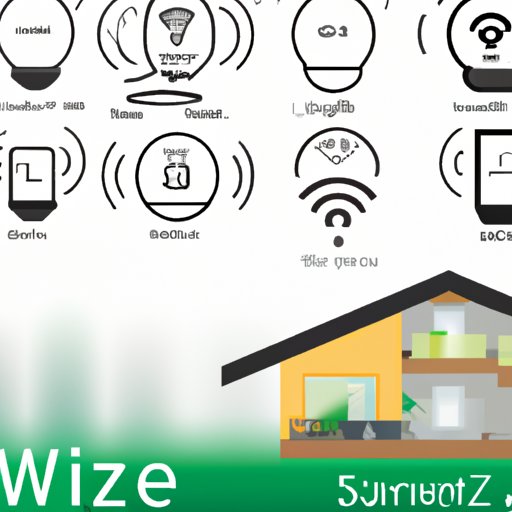Introduction
Z-Wave technology is a wireless communication protocol that enables connected devices to communicate with each other. It is commonly used in smart home systems to control lights, locks, thermostats, and more. This article will provide an overview of Z-Wave technology and explain how it can be used to automate your home.
Overview of Z-Wave
Z-Wave is a mesh network protocol developed by Sigma Designs in 2001. It operates on a frequency of 908.42 MHz and has a range of up to 100 feet indoors and 400 feet outdoors. It is designed for low-power applications and uses AES-128 encryption for secure data transmission.
How It Works
Z-Wave works by establishing a mesh network between compatible devices. Each device acts as a repeater, meaning that it can receive and transmit signals from other devices. This allows for a wide area of coverage and ensures that signals are not lost due to distance or obstacles.
When a Z-Wave device receives a signal, it passes it along to the next device in the network. This process continues until the signal reaches its intended destination. By using this method, Z-Wave is able to create a reliable connection between devices over large distances.
What It Can Do
Z-Wave technology can be used to control a variety of devices in your home. It can be used to control lights, locks, thermostats, and more. In addition, it can also be used to monitor energy usage and detect water leaks. Z-Wave is a versatile protocol that can be used to create a truly connected home.
Automating Your Home with Z-Wave
Setting up a Z-Wave system is relatively simple. The first step is to purchase a Z-Wave hub, which acts as the central control unit for your system. Once the hub is installed, you can begin adding compatible Z-Wave devices to the network.
Adding Compatible Devices
Once the hub is set up, you can begin adding compatible devices to your Z-Wave network. Z-Wave devices come in a variety of shapes and sizes, so you should have no trouble finding something to suit your needs. Additionally, many devices are compatible with multiple protocols, so you don’t have to worry about compatibility issues.
Controlling Your Home with Z-Wave
Once your Z-Wave system is set up, you can begin controlling your home with it. Most Z-Wave hubs come with an app that allows you to control your devices from anywhere. You can set schedules, adjust settings, and even check the status of your devices remotely.
The Smart Home Revolution
Z-Wave is at the forefront of the smart home revolution. It is a reliable, secure, and cost-effective way to automate your home. With Z-Wave, you can make life easier and enhance your home security.
A Guide to Understanding Z-Wave Technology
Z-Wave technology is a powerful tool that can be used to automate your home. Here are some key points to keep in mind when considering Z-Wave:
What Is Z-Wave?
Z-Wave is a wireless communication protocol that enables connected devices to communicate with each other. It is commonly used in smart home systems to control lights, locks, thermostats, and more.
What Are the Benefits?
Z-Wave is a reliable and secure protocol that is easy to set up and use. It is also cost-effective and offers a wide range of compatible devices.
What Are the Challenges?
Z-Wave technology can be difficult to troubleshoot and requires a dedicated hub for operation. Additionally, it is not compatible with all devices.
What Devices Work with Z-Wave?
Z-Wave is compatible with a wide range of devices including lights, locks, thermostats, and more. Many devices are also compatible with multiple protocols, so you don’t have to worry about compatibility issues.
Conclusion
Z-Wave is a powerful tool that can be used to automate your home. It is reliable, secure, and cost-effective, and offers a wide range of compatible devices. With Z-Wave, you can make life easier and enhance your home security.
(Note: Is this article not meeting your expectations? Do you have knowledge or insights to share? Unlock new opportunities and expand your reach by joining our authors team. Click Registration to join us and share your expertise with our readers.)
